Resolution
The resolution of remote sensed raster data can be characterized in several different ways. There are four primary types of "resolution" for rasters:
- Spatial
- Spectral
- Radiometric
- Temporal
It is nearly impossible to acquire imagery that has high spatial, spectral, radiometric and temporal resolution. This is known as Resolution Trade-off, as it is difficult and expensive to obtain imagery with extremely high resolution. Therefore it is necessary to identify which types of resolution are most important for a project.
Spatial
Spatial resolution is the type of resolution most people are familiar with. Spatial resolution is usually reported as the length of one side of a single pixel. For example, Landsat 8 has 30 meter spatial resolution. In other words, an image with 30 meter spatial resolution means that a single pixel represents an area on the ground that is 30 meters across.
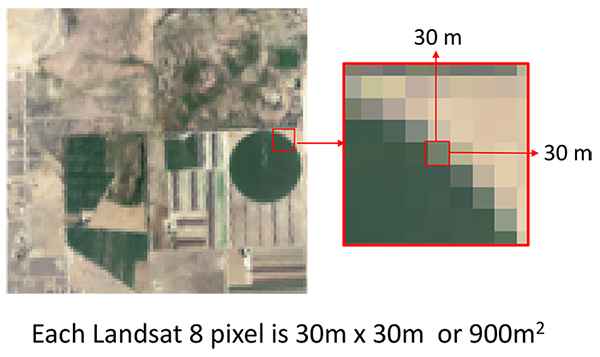
In analog imagery (film), the dimension (or width) of the smallest object on the ground that can be distinguished in the imagery defines the spatial resolution. The spatial resolution of a raster is determined by sensor characteristics for digital imagery and film characteristics including field of view, altitude for film photography.
Satellite Data Spatial Resolution
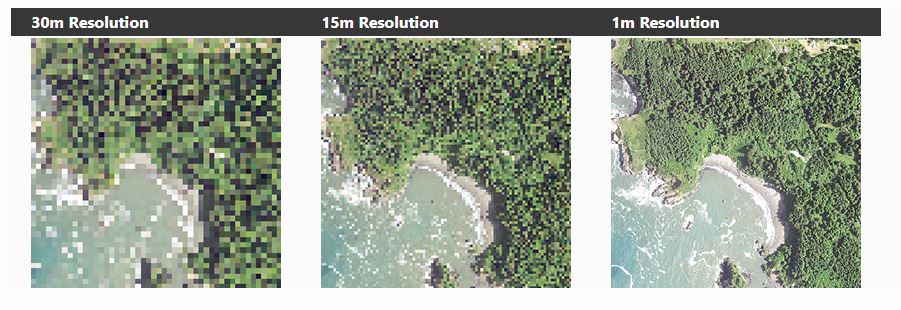
| Sensor | Spatial Resolution |
|---|---|
| MODIS | 250-1000 m |
| Landsat MSS | 60 m |
| Landsat TM, ETM+, OLI | 30 m |
| Sentinel-2 | 10-60 m |
| ASTER | 15 m |
| Digital Globe | 0.3 m (30 cm) |
The higher the resolution of the image, the more expensive it is to capture, process, and distribute. Part of this is just the size of the image. As the spatial resolution increases, the size of the raster goes up by the increase in resolution squared! This makes spatial resolution critical to control as we need enough resolution to see what we are interested in on the ground but not so much that we cannot process the data effectively. The spatial resolution of sensors varies greatly and is usually inversely related to return time and coverage area. This means that a satellite that acquires daily images generally has a more coarse (larger) spatial resolution.
Spectral
Spectral resolution refers to how many spectral “bands” an instrument records. Spectral resolution is also defined by how “wide” each band is or the range of wavelengths covered by a single band. Black and white photos contain only 1 band that covers the visible wavelengths, color (RGB ) images contain 3 bands and Landsat 8 has a total of 11 bands. For example, MODIS (Moderate Resolution Imaging Spectroradiometer) has greater spectral resolution than Landsat 8 because it has 36 relatively narrow bands that cover wavelengths from 0.4 to 14 micrometers. Landsat 8, on the other hand, has a total of 11 bands that cover less wavelengths and each band is wider in terms of wavelength. 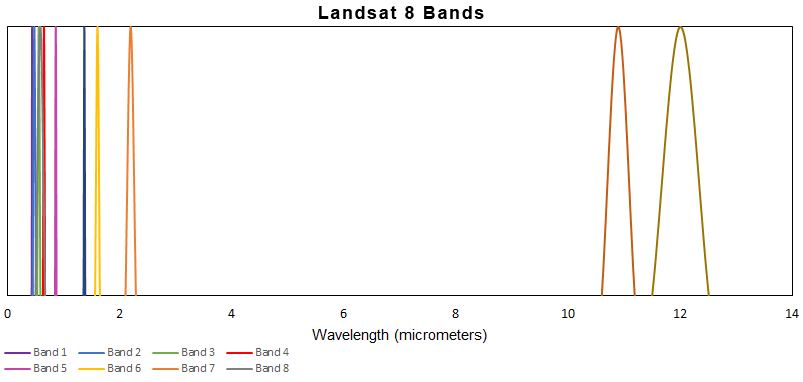
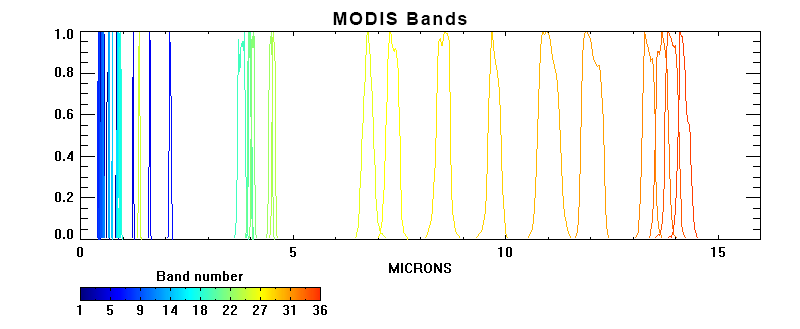
Radiometric
Radiometric resolution is how finely a satellite or sensor divides up the radiance it receives in each band. The greater the radiometric resolution the greater the range of intensities of radiation the sensor is able to distinguish and record. Radiometric resolution is typically expressed as the number of bits for each band. Traditionally 8-bit data was common in remote sensed data, newer sensors (like Landsat 8) have 16-bit data products. 8 bits = 28 = 256 levels (usually 0 to 255) 16 bits = 216 = 65,536 levels (0 to 65,535).
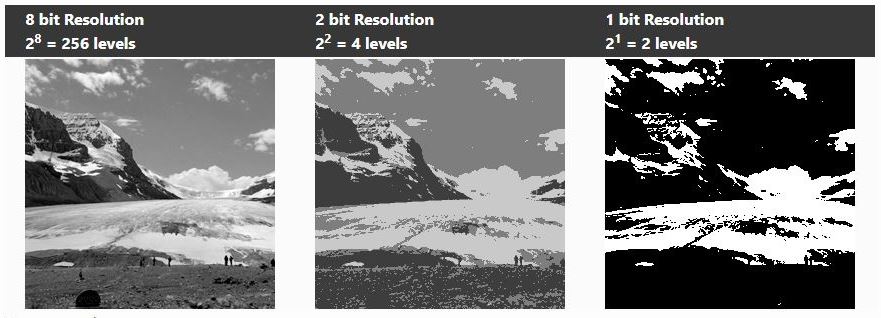
Temporal
Remote sensed data represents a snap shot in time. Temporal resolution is the time between two subsequent data acquisitions for an area. This is also known as the “return time” or "revisit time". The temporal resolution depends primarily on the platform, for example, satellites usually have set return times and while sensors mounted on aircraft or unmanned aircraft systems ( UAS ), have variable return times. For satellites, the return time depends on the orbital characteristics (low vs high orbit), the swath width and whether or not there is an ability to point the sensor. Landsat has a return time of approximately 16 days, while other sensors like MODIS have nearly daily return times.
